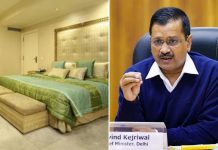
They have threatened to block the five main entry routes to Delhi from neighbouring states. The farmers say they are prepared for a long haul in this “decisive battle”. The Narendra Modi government has sent signals that it is willing to help farmers end their agitation before the winter gets harsher and the protest event turns into a super-spreader for Covid-19.
Union Home Minister Amit Shah is said to have held two meetings with Union Agriculture Minister Narendra Singh Tomar after returning from the poll campaign for Hyderabad municipal polls. Some reports have quoted a couple of farmer leaders as saying that they received a telephone call from Amit Shah expressing the government’s readiness for talks.
This indicates that the protest by farmers may end soon. But with what kind of outcome will the farmers’ protest end?

First, let’s see who these farmers are and why they are protesting.
The protest has farmers from Punjab and Haryana as its main constituents. Farmers have also come from Rajasthan and Uttar Pradesh. In Haryana and western Uttar Pradesh, the BJP governments have not been fully successful in convincing farmers over the issue of Minimum Support Price (MSP). The Congress governments of Rajasthan and Punjab have extended their support to the protesting farmers as it helps the party in mounting pressure on the Narendra Modi government.
Farmers in other states are not much moved by the protests in these four states. The reason is simple — for most of these farmers, MSP is not a moving issue. The NSSO report said less than 10 per cent farmers benefit from MSP — a tight regime that allows procurement of foodgrains in approved mandis.
For small and marginal farmers, higher MSP means costlier food in the market. The MSP tends to set the market price for foodgrains and almost all small and marginal farmers are net buyers of foodgrains. So, a regime that helps the “rich” farmers of Punjab, Haryana and western Uttar Pradesh makes the daily lives of an average Indian farmer a little more miserable.
Still those protesting are from about 400 organisations of farmers. They have come together under an umbrella banner of the Samyukt Kisan Morcha. A number of these organisations have been politically aligned against the BJP. The presence of some leaders such as Gurnam Singh Chaduni, who contested Lok Sabha election in 2019 from Ladwa constituency in Haryana polling just over 1,300 votes, has given the BJP government an opportunity to discredit the agitation. Chaduni faces a few criminal cases.
Recently, the Haryana government told the Punjab and Haryana High Court in an affidavit that majority of the protesting outfits are “organisations with a history of indulging in criminal activities, creating law and order problems, and disturbing public peace and order”.
It is politics in Punjab.
In Punjab and Rajasthan, the farmers have received support from the ruling government. In Punjab, especially, government support has sustained the protest leading to blockades of railways and roadways.
Else, the farmers in Punjab may not have had much reason to protest at the beginning of a fresh cropping season. The Punjab government of Congress leader Captain Amarinder Singh passed a resolution in state assembly pulling itself out from the ambit of the three farm bills passed by Parliament.
Source: India Today


































